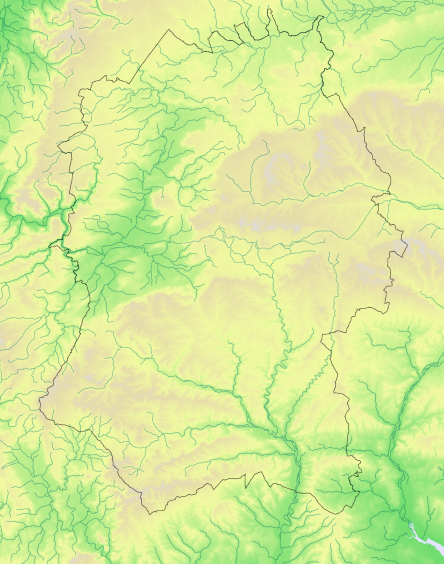Peregrine Falco peregrinus
Breeding distribution change
Scarce year-round visitor, especially winter, from north/west/south Britain, rare breeder
Atlas species lists
- Breeding distribution 1995–2000
- Summer abundance 1995–2000
- Winter distribution 1995–2000
- Winter abundance 1995–2000
- Breeding distribution 2007–2012
- Summer abundance 2007–2012
- Winter distribution 2007–2012
- Winter abundance 2007–2012
- Breeding distribution change
- Summer abundance change
- Winter distribution change
- Winter abundance change
More Peregrine maps
- Breeding distribution 1995–2000
- Summer abundance 1995–2000
- Winter distribution 1995–2000
- Winter abundance 1995–2000
- Breeding distribution 2007–2012
- Summer abundance 2007–2012
- Winter distribution 2007–2012
- Winter abundance 2007–2012
- Breeding distribution change
- Summer abundance change
- Winter distribution change
- Winter abundance change
Map explanation
This map shows where changes occurred in the breeding season distribution of the species in Wiltshire between 1995-2000 and 2007-2012, as revealed by the fieldwork for Birds of Wiltshire (Wiltshire Ornithological Society 2007) and the shared fieldwork for Bird Atlas 2007-2011 (BTO 2013) and for Wiltshire Tetrad Atlas 2007-2012.
Key
Data not mapped to preserve confidentiality
The most cosmopolitan of all raptors, Peregrines breed from the High Arctic of North America and Eurasia to the sounthernmost parts of South America, Africa and Australia though with notable gaps, for example they are absent from Iceland and New Zealand.
In Britain their numbers declined in the 19th century as game preservation became more widespread and firearms more accurate. They also suffered during World War II when many were shot and eggs destroyed in nests because of fears that they threatened carrier pigeons bringing messages from RAF airmen who had crash-landed at sea. By the end of the war their numbers had fallen by some 35% to fewer than 500 pairs, a total that declined even more in the 1950s and 1960s because of the prevalence of organochlorine pesticides in their prey species. Susequent pesticide bans coupled with nest-protection scheme led to recovery: a survey in 1991 found a total of 1283 pairs, while a further survey in 2002 showed an increase to 1492 pairs. Bird Atlas 2007-11 recorded a 200% expansion in breeding range in Great Britain since the 1968-72 Breeding Atlas and noted that breeding populations had reached an all time high.
In Wiltshire in the 19th century Peregrines were widespread visitors all the year round and rare breeders, most notably on Salisbury Cathedral where there were confirmed or possible records of breeding in nine years between 1864 and 1953. The national decline in the breeding population of Peregrines in the late 1950s was reflected in Wiltshire, where there were only 16 records betweem 1957 and 1967. The 1981-84 Winter Atlas showed Peregrines in only six of Wiltshires 33 core 10km squares. But thereafter numbers began to go up again. There was an increase of 50% in the number of records between 1980 and 1989 and from 1993 onwards the records became too numerous to mention individually. Birds of Wiltshire recorded two breeding pairs and estimated a winter population of 30-50 in 1998-2000. Bird Atlas 2007-11 showed Peregrines present in every Wiltshire 10km square in winter, and in summer breeding or possibly breeding in ten squares and present in a further eight.
References
The following references are used throughout these species accounts, in the abbreviated form given in quotation marks:
“1968-72 Breeding Atlas” – Sharrack, J.T.R. 1976: The Atlas of Breeding Birds in Britain and Ireland. T. & A. Poyser
“1981-84 Winter Atlas” – Lack, P.C. 1986: The Atlas of Wintering Birds in Britain and Ireland. T. & A. Poyser
“1988-91 Breeding Atlas” – Gibbons, D.W., Reid, J.B. & Chapman, R.A. 1993: The New Atlas of Breeding Birds in Britain and Ireland 1988-91. T. & A. Poyser
“Birds of Wiltshire” – Ferguson-Lees, I.J. et al. 2007 : Birds of Wiltshire, published by the tetrad atlas group of the Wiltshire Ornithological Society after mapping fieldwork 1995-2000. Wiltshire Ornithological Society.
“Bird Atlas 2007-2011” – Balmer, D.E., Gillings, S., Caffrey, B.J., Swann, R.L., Downie, I.S. and Fuller, R.J. 2013: Bird Atlas 2007-2011: the Breeding and Wintering Birds of Britain and Ireland
“WTA2” – ("Wiltshire Tetrad Atlas 2 ") the present electronic publication, bringing together the Wiltshire data from “Birds of Wiltshire” and “Bird Atlas 2007-11”, together with data from further fieldwork carried out in 2011 and 2012.
"Hobby" - the annual bird report of the Wiltshire Ornithological Society.

